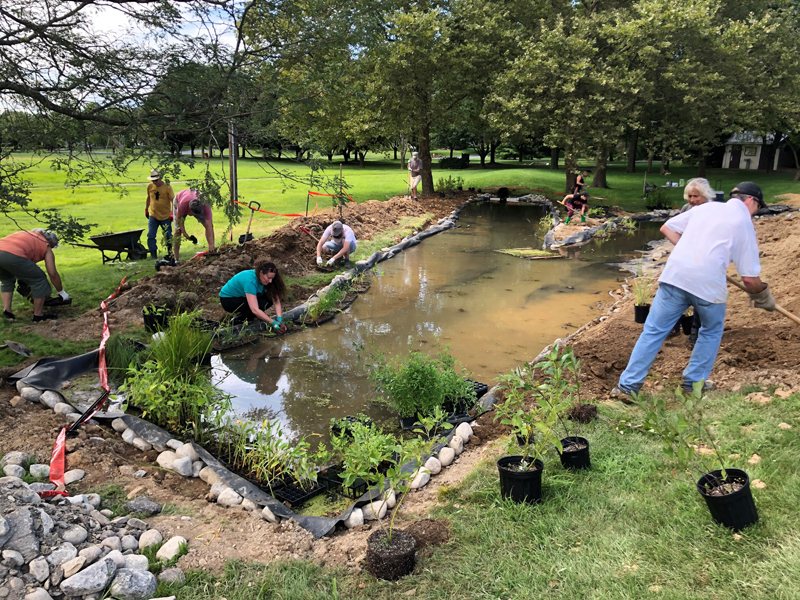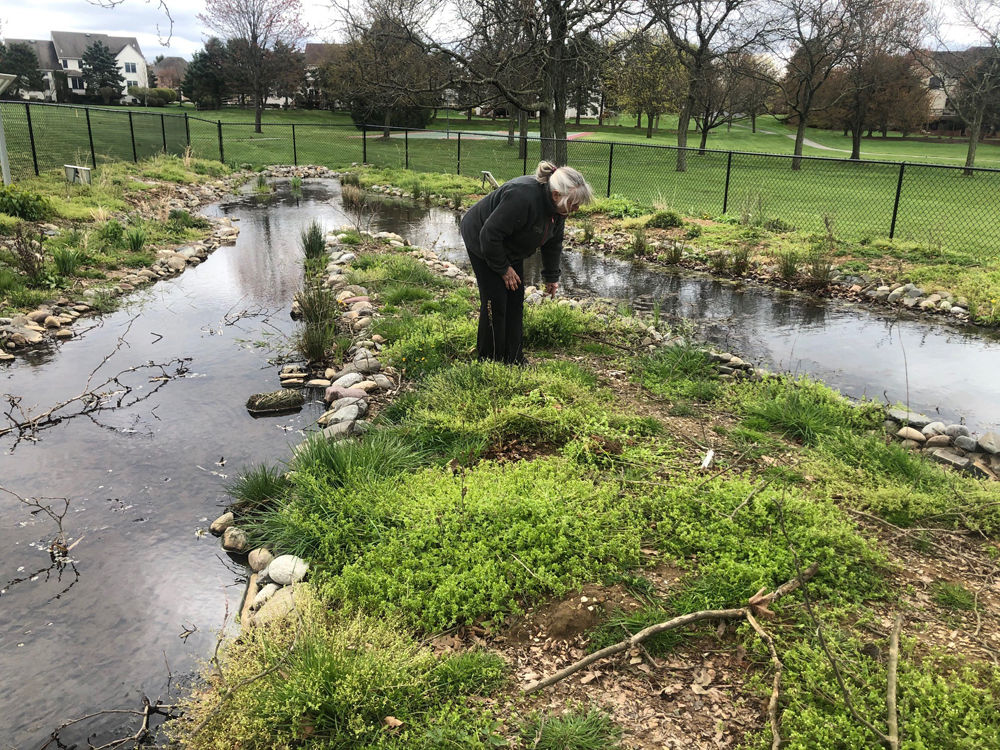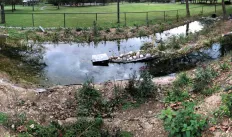In August of 2019 the Lehigh Valley Group completed the construction of a wetland wildlife and native plant habitat in Ricky Ridge Park in Orefield, Upper Macungie Township. Our group had been searching several years for a site where a vernal pond could be built when we discovered the Ricky Park site, which has a spring water source that would enable a year-round water supply for a shallow pond. This spring water was previously diverted to a storm water swale where township officials would spray annually with herbicides, eliminating wildlife habitat potential. This project would create wetland habitat in the midst of a frequently visited municipal park.
The township approval process moved forward with surprising alacrity as they had goals to reduce storm water siltation and to provide public educational venues. The proposed wetland had potential in both of these areas. In addition, uncontrolled water flooding in the park made it difficult to mow the grass and for walkers or people recreating in the park to keep their feet dry when walking on the path or grass.
A new 8 in pipe 180 ft in length was installed to feed water to the location where a ”Y” shaped, lined pond was constructed. The new pond is 160 ft in length x 11 ft wide and excavated to a 1 ft deep center trench and 6” deep terraces on both sides of the trench where the emergent water plants were placed and a 45-mil pond liner was laid in place to prevent leakage into the park. The water flow path has the inlet water flowing into one of the branches of the Y and flow exits through a rectangular weir, which sets the pond depth, out the other branch of the Y. The outlet flow was directed into an existing 18” storm drainpipe that returns the water to its original path along the swale. Two solar powered pumps circulate water down the length of the stem in this Y shaped wetland.
The project partnered with a local native plant supplier and a date was set for volunteers to come out and assist in planting the $3,000 in native emergent water plants, perennial flowering plants and shrubs at the new wetland site and a dozen volunteers came out to help with this event. It will take 2-3 years for the native plantings to fill in the area. An extensive diversity of native plants were included in the planting. Plugs of cardinal flower, pickerel weed, arrow arum, duck potato, swamp milkweed, soft run, white aster, lizard tail, sweet flag, tussock sedge, rushes and blue flag iris were placed in the water and flowering perennials including Joe Pye weed, blue coneflower, marsh marigold, white turtlehead, mountain mint, red monarda, black eyed Susan, switch grass, sunflower, grass leaf goldenrod, sideoats grama grass, monkey flower and New York aster, blue lobelia and bee balm were planted along with woody shrubs including button Bush, spice bush, red chokeberry, yellow twig dogwood and winterberry holly and finally ferns including royal and sensitive fern.

Almost immediately dragonflies and various aquatic insects and snails arrived. Then the frogs appeared along with visiting monarchs, bees and even bats were seen darting over the pond in the evening. To my surprise, small fish (bluegills and bass) arrived in the wetland as well. Neighbors and other park users stop by to inquire about the project or to read the informational sign and have been universally supportive and grateful for the project, which has also helped expand awareness of the Sierra Club. In addition, the lined pond design seems to have mitigated flooding in the park by capturing and redirecting the water.
The Upper Macungie Township manager, Robert Ibach, Jr has also thanked us for the project, stating “First of all let me thank you for all the work you have done on this project; it really looks good and offers the Township benefits. “The Parks and Recreation department did have one requirement and that was to install a perimeter fence for safety. This had not been budgeted but, thankfully, the Lehigh Valley Group had the funds to support installation of the 222 ft, 4 ft tall, black vinyl coated chain link fence. The project is grateful to have received funding after successfully applying for a $15,000 grant obtained from the Huplits Wildlife Grant program, which is administered by the Allegheny Group and also grateful to the Lehigh Valley Group who provided an additional $7,000 for the fence and the solar pumps.
Matt MacConnell
Lehigh Valley Group Conservation Chair

